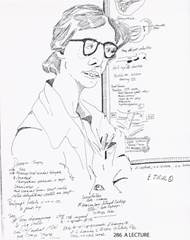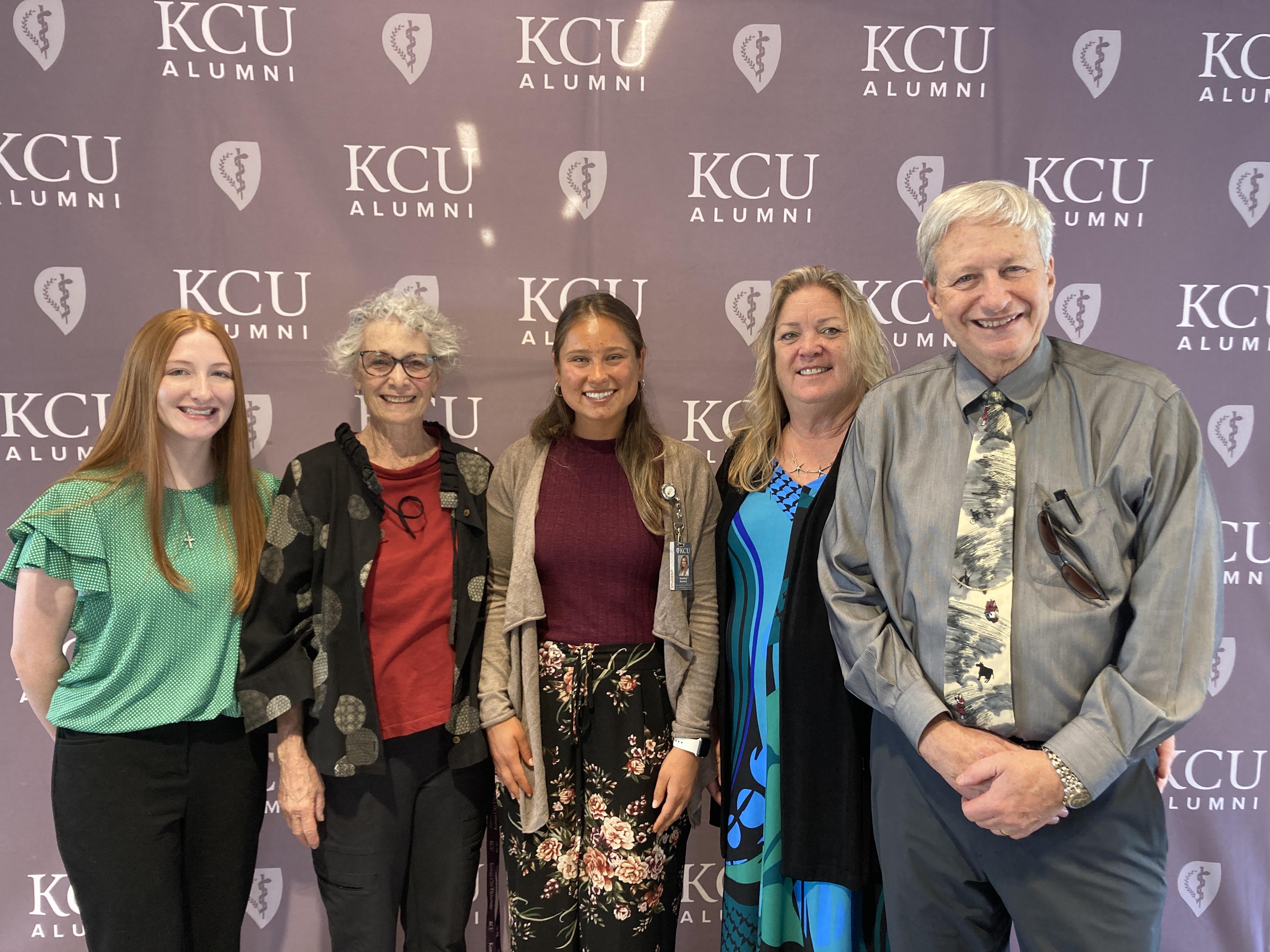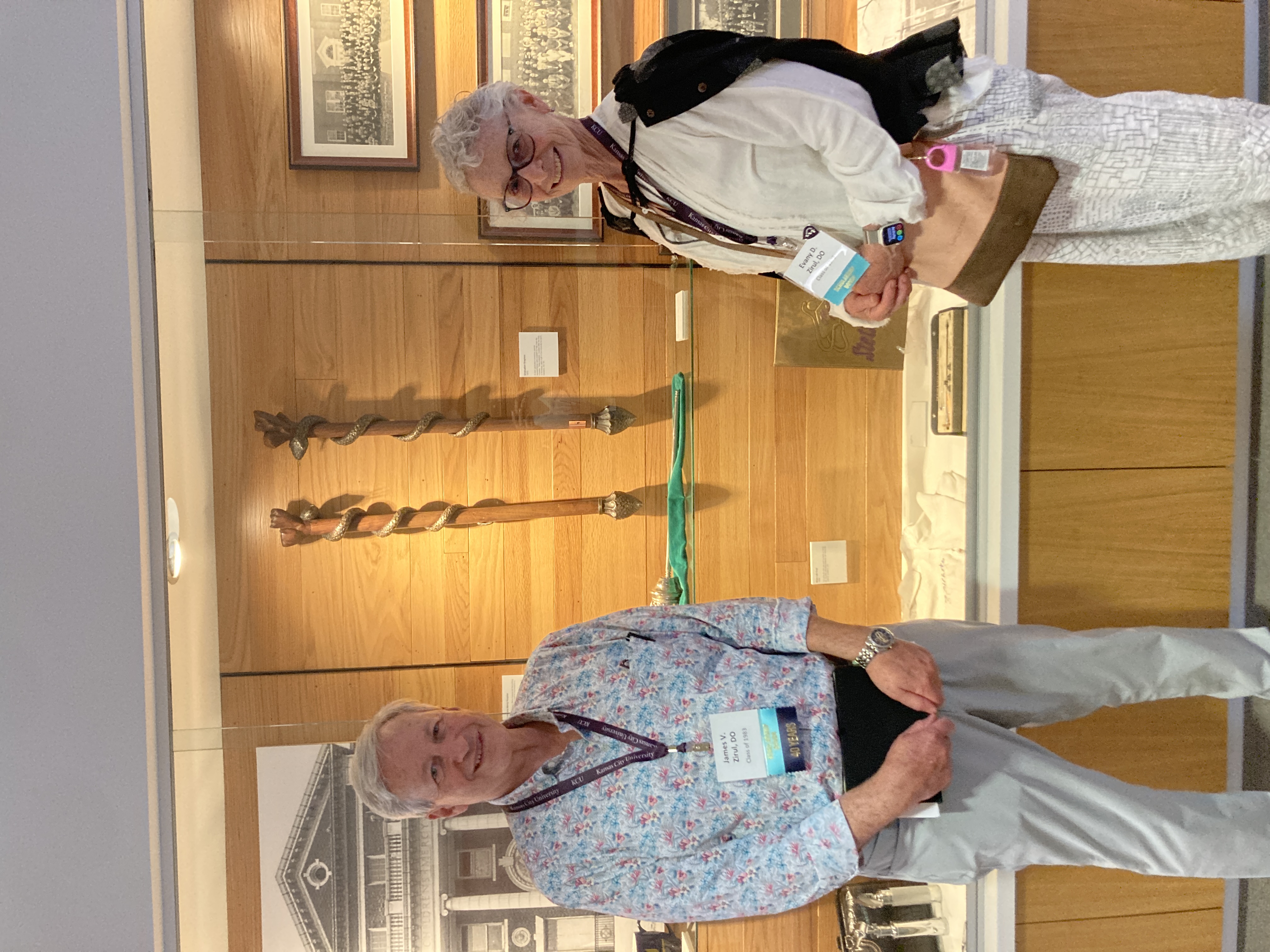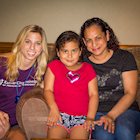For Evany Zirul, DO (COM '79), MFA, her lifelong journey as a creative soul began with a sketchbook and a special pen given to her by her parents when she was just 14. The sketchbook was always chock full of pen and ink drawings and writings that ranged from personal insights to school notes, and was often sought after by her fellow students. Even then, the future Dr. Zirul and her sketchbook were renowned for not only exacting, detailed notes, but also social commentary on the relevance of the material and often the teacher presenting it.
As an adult, Dr. Zirul continued to refine her combined passion for art and academics by accepting a post as an art instructor at a college in Danville, Kentucky. At that time, women were not yet fully integrated into the workforce and were often the first to be let go – which Dr. Zirul experienced firsthand during the recession of 1973.
As she explored options for her next chapter, Dr. Zirul was encouraged by her family to consider a different path: medical school. Her father, Elias Zirul, DO (COM '50), was a practicing internist in Kansas City. He encouraged her to enroll at Kansas City University (KCU), then known as the Kansas City College of Osteopathic Medicine, where he was a fixture of the faculty. Earning her admission, Dr. Zirul joined her father at KCU where she was one of only eight women in the Class of 1979.
A special project helped Dr. Zirul transition from a career in art into medical school: she was commissioned to craft two maces for student marshals to carry during commencement. Dr. Zirul crated the maces from wood and bronze and modeled them after the Rod of Asclepius as part of University tradition. The commission she earned helped pay for her first year of medical school.
Upon graduation, she launched a 30-year career as an otolaryngology (ear, nose and throat) surgeon. And, like her father before her, Dr. Zirul soon became a beloved member of the KCU faculty.
Dr. Zirul’s transition from art to medicine was marked by her ability to observe patients in a unique way. Hands-on clinical work is where she soared. She credits her father for teaching her the art of observation and attention to detail. By intentionally noticing each patient’s posture, their walk, how they carried themselves and their facial expressions, Dr. Zirul treated the whole person, not just their symptoms.
During her years as a surgeon, she spent her down time away from the hospital at her studio working in bronze sculpture. For Dr. Zirul, art magnified her sense of story. Just as each person has a story, so does each piece of art. On occasion, her art was influenced by a patient. She admired a young patient who was fighting cancer and sculpted him with a crab on his shoulder, representing cancer.
Along with her brother James Zirul, DO (COM ’83), a fellow KCU alumnus and ear, nose and throat specialist, they established the Elias E. Zirul, DO, Memorial Scholarship to honor their father in 2008. During a recent visit to KCU’s Homecoming, they met the Zirul Memorial Scholarship recipient and enjoyed seeing the campus. They were both pleased by KCU’s culture and commitment to diversity and inclusion.
Dr. Zirul’s path was far from easy as one of the few women in her medical studies, but she preserved and thrived. At Homecoming, her former student, Carol Kirila, DO (COM '91), now an associate professor of Primary Care at KCU, remembered Dr. Zirul’s common-sense approach to teaching real life concepts with clear analogies, which helped students understand even the most complex cases.
Her advice to students? “Recognize that your body is a vessel and that you need to nurture it. You need to take the time out to take care of yourself. If your go-to is music, if you play an instrument, if you do art, if you are a knitter, discover something other than medicine to recharge. Set some time--even if it’s just once a week--to gain perspective beyond your studies.”
For Dr. Evany Zirul, the thread that weaves together medicine, art and giving lies in the power of empathy and human connection. She firmly believes that both medicine and art possess the ability to heal and inspire and when those are combined with a giving spirit, they can effect positive change in society. One must only be given the right tools – perhaps a sketchbook, a stethoscope or both – to get started
_20231127185731_0.png)





_20230801142837_0.jpg?w=140&h=140)